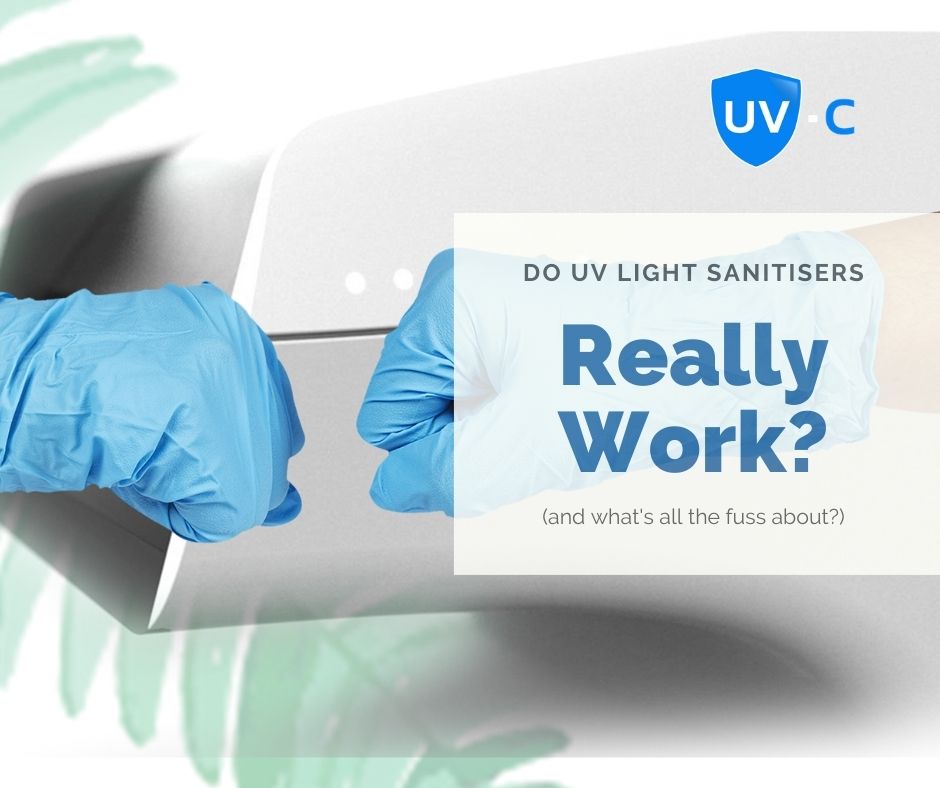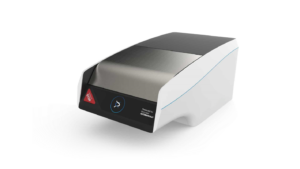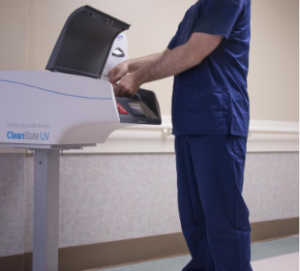
Do UV Light Device Sanitisers Really Work?
UV light device sanitisers use ultraviolet light to disinfect your phone and other devices to offer a second layer of protection against viruses and other harmful microbes. But can they help protect you from COVID-19?
We’re already used to washing our hands and minimising contact and understand that the best ways to protect ourselves against COVID-19 (and other contagious illnesses) include frequent hand washing, social distancing, and using appropriate personal protective equipment like masks. If you’re looking to take your precautionary game to the next level, you’ve probably considered any number of UV light device sanitisers that have recently gained popularity. But do they really work? And if so, which one should you buy? We’re commited to helping you figure it all out.
Does UV Light Kill Bacteria?
UV light is one type of electromagnetic radiation that comes naturally from the sun and can be artificially created with specialised bulbs.
There are three types of UV radiation—UV-A, UV-B, and UV-C—none of which can be observed with the naked eye. Of the three, UV-C has the smallest wavelengths (180-280nm) and is the one required for UV disinfection.
Most commercial UV products are sold as sanitisers, and it’s important to note sanitation and disinfection aren’t synonymous. Sanitisation reduces the growth of bacteria, growth, or fungi. Disinfection, on the other hand, “eliminates many or all pathogenic microorganisms, except bacterial spores, on inanimate objects,” per the CDC in the USA.
Although UV-C light is just one disinfection method and is not yet proven to destroy COVID-19. The EPA keeps a list of COVID-19 approved disinfectants that can be used on various surfaces, but make sure to carefully read the directions, as many of these products aren’t tech-friendly.
 Do UV Light Device Sanitisers Work?
Do UV Light Device Sanitisers Work?
While there isn’t yet any scientific proof that UV light device sanitisers destroy the novel coronavirus, The National Academies of Science, Engineering, and Medicine believe the technology should work effectively. UV light is effective against over coronaviruses like the one that causes MERS, and the US government is working with industry leaders to define standards for UV disinfection technology settings.
Furthermore, CleanSlate, a company that sells UV-C sanitization solutions to the healthcare, hospitality, and food processing industries, released data in July showing that UV-C light can kill 99.979 percent of MS2 bacteriophage, a surrogate for viral human pathogens such as the novel coronavirus, in just 20 seconds. Since most commercial laboratories don’t meet containment standards for handling the novel coronavirus, such testing is as close as we can get for the time being.
Many hospitals already use UV light to disinfect against superbugs, and have ramped up efforts in hopes that it will have the same effect on COVID-19. Duke University’s network of hospitals have used UV disinfection for years. And in 2017, a study published in The Lancet, funded by the US Centers for Disease Control and Prevention, found UV disinfection can reduce transmission of the four most common superbugs—MRSA, VRE, C. difficile, and Acinetobacter—by a cumulative 30 percent.
Airlines and hotels are also betting big on the technology. JetBlue started testing a UV light robot earlier this year that’s able to disinfect an entire airline cabin within 10 minutes, and the Four Seasons Hotels & Resorts created an extensive health and safety protocol in conjunction with Johns Hopkins Medicine International, called Lead With Care, that includes the use of ozone technology for air purification and/or UV technology for HVAC systems at its properties.
Again, these systems are used as a second line of defense against viruses and microbes, and are not yet proven to destroy the novel coronavirus. It’s also worth mentioning the systems used in commercial settings are dramatically different than consumer products. In fact, we’ve found very few consumer products we can recommend at this time.
What the Experts Say About UV Light Device Sanitisers
Hundreds of UV light device sterilising bags, cases, and wands have flooded the market since the start of the COVID-19 pandemic, but few manufacturers offer any in-depth details about their products, let alone lab tests that show they offer any protection whatsoever.
Amest Adalja, MD, a senior scholar and assistant professor at the John Hopkins University Center for Health Security, is skeptical about the efficacy of consumer UV sanitizers. In an interview with NBC News, he said, “I just have a hard time trying to find a role for [UV sanitizers] that is effective in the general public where you have an actual, meaningful impact, and not just some kind of marginal benefit that’s not really worth it.”
Richard Webster, a clinical researcher and methodologist at the CHEO Research Institute in Ontario, Canada, has doubts about consumer-grade UV sanitizers as well. In an interview with the CBC, he said, “We think the amount of UV you need is about 20,000 joules per metre squared and you probably aren’t going to get that in your hand-held device.”
Andrea Armani, a professor of engineering at the Armani Lab at the University of Southern California, worked with a team of researchers and published Build-at-home UV-C disinfection for healthcare settings earlier this year. In an interview with Discover, Professor Armani discussed her concerns about UV sanitation wands in particular. She says there is no way for consumers to test UV sanitizer wands and recommends people read carefully before making purchases. The product specifications should state the wand is 260 nanometers in range and give a specific duration that is no more than seconds.
 How to Use a UV Light Device Sanitiser
How to Use a UV Light Device Sanitiser
It’s clear that UV light shouldn’t be your only defense against COVID-19 and other contagions. But if you’re going to use it in addition to more proven methods like washing your hands, you should make sure that you are using it correctly.
UV disinfection works best on non-porous objects without a lot of nooks and crannies. If the light isn’t able to reach all the exposed surfaces of a device, it won’t be very effective. That means you’ll want to take your phone (or other device) out of its case and make sure all the ports are open for the best results.
While your device is in the UV light device sanitiser, you might want to clean the case and the outside of the sanitizer itself with an EPA-approved disinfectant like Dettol as you use hand sanitiser. With CleanSlate UV, once the sanitisation cycle is complete for your device you’re good to go, in around 20 seconds.
Read more: https://au.pcmag.com/cases-carrying-gear/68425/do-uv-light-phone-sanitizers-really-work/







